When launching an online presence, it can be tough to decide between a website and a blog. While a regular site is always a great starting point, creating a blog can make it easier to reach your audience and generate exposure on search engines.
For most, however, the difference between the two might not be instantly apparent. So, what is a blog, and what makes it different from typical websites?
We’ll explain it all in this guide. We’ll also cover the benefits of blogging, how to start a blog, tips to make money as a blogger, and what makes a successful blog in the first place.
- These are the best blogging platforms around
What is a blog?
A blog is a type of site that publishes frequently-updated information about any topic. The term stands for “weblog” or “web log,” referring to logging content on the world wide web.
Blogs originated in the late 1990s, namely as a platform to share an owner’s interests and experiences.
For instance, pioneer blogger Justin Hall initially used his personal blog to talk about his life and the websites he liked visiting. The person who coined “weblog” as a term, Jorn Barger, started his Robot Wisdom blog to publish essays on his interests – from AI and history to James Joyce.
Blogs have grown exponentially since then. Out of 1.7 billion websites that exist around the world, 600 million of them are blogs.
The subject matter has also varied. While some internet users start a blog for personal reasons, many are using it to:
- Educate readers about a specific topic - Entrepreneurial blog owner Pat Flynn uses his Smart Passive Income website to guide his audience on starting an online business.
- Brand their online presence - Author James Clear began by writing articles on his website, branding himself as the go-to source for habit formation and personal development.
- Market a business - Toggl’s website has a blog section about workplace productivity, a topic related to its software. The purpose is to attract people searching for these subjects in hopes of converting them into customers.
- Build a community - An excellent example of this is Medium publications like Start it up. It encourages bloggers interested in professional development to contribute to the blog and share their knowledge.
Blog vs website: What’s the difference?
The primary difference between a blog and a website lies in its content.
Mainly, the content of a blog consists of blog posts, which are articles presented on web pages. The homepage typically displays these entries in reverse chronological order. The blogger usually publishes new posts or updates existing ones on a regular basis.
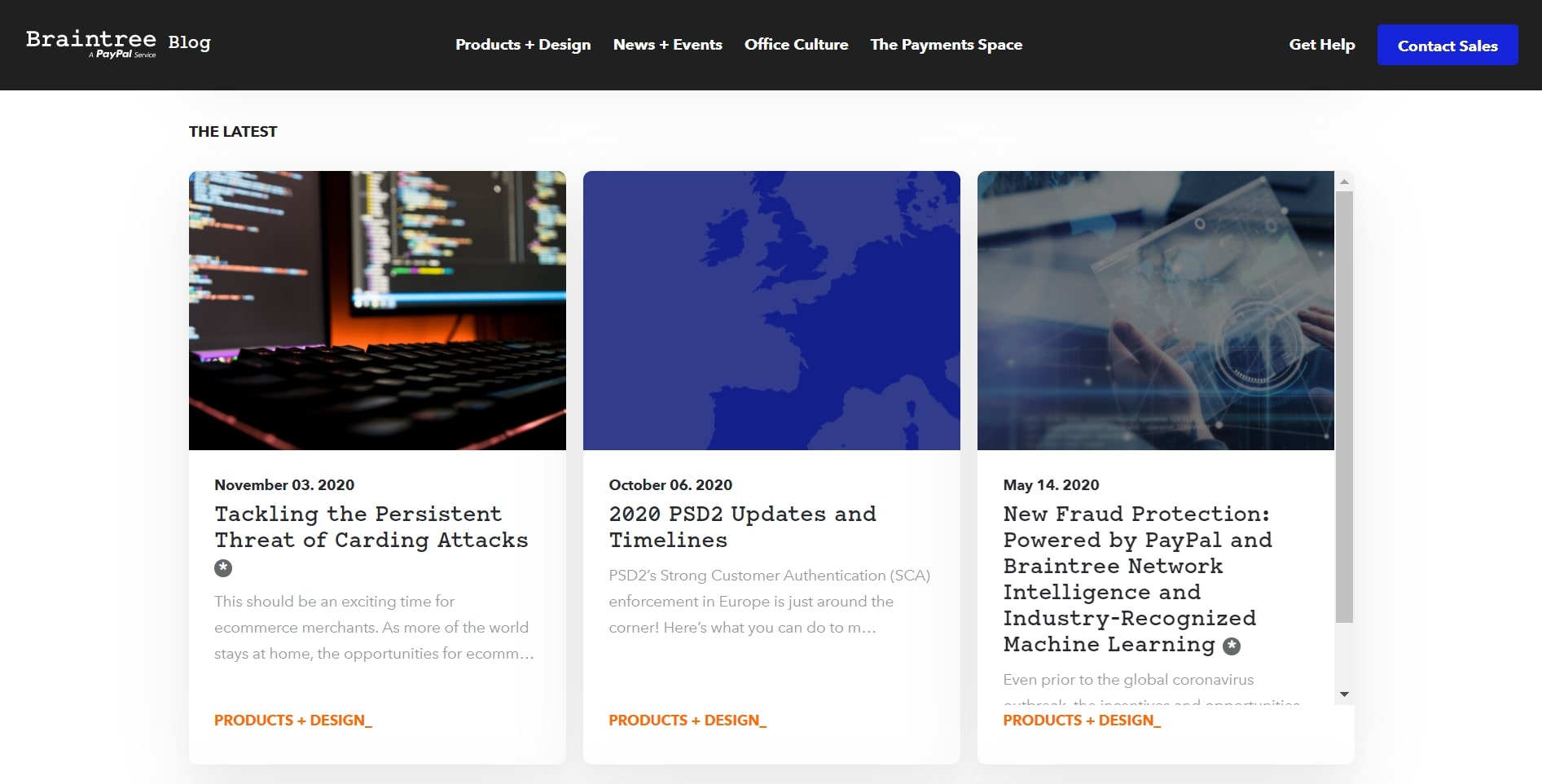
Here is an example of a blog by Braintree Payments. Notice how the page presents the content from the latest to oldest.
On the other hand, general static websites don’t typically present information in reverse chronological order, nor do they require frequent updating.
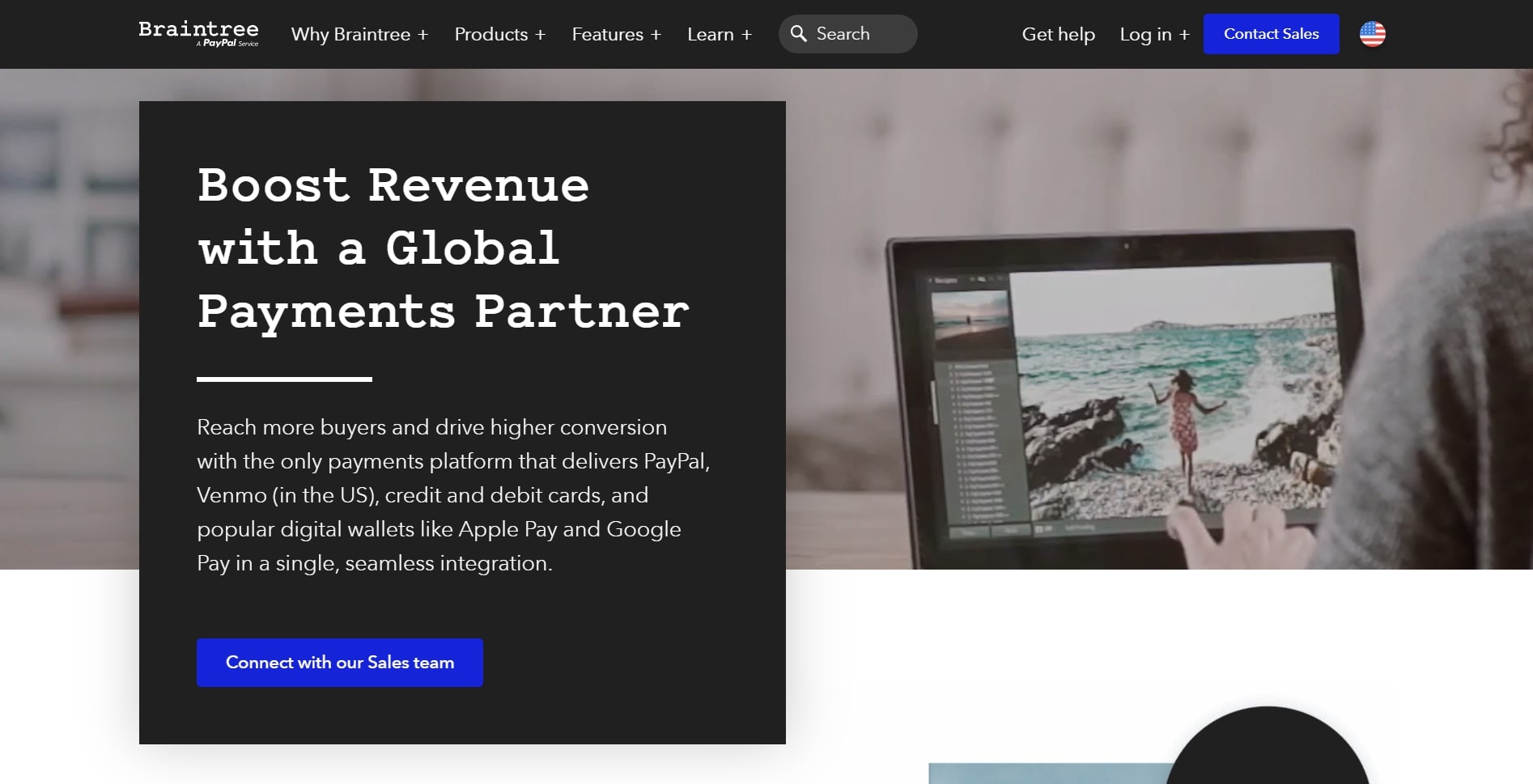
For instance, the primary Braintree website contains pages about the company’s products and their features. This type of information can stay the same for quite some time unless circumstances require a change.
Additionally, blogs usually encourage reader engagement via comments below the post. It’s rare to find regular websites that include such a feature as they generally don’t aim to connect with the audience.
What are the benefits of starting your own blog?
The advantages to starting a blog include:
- New connections - Publishing content about topics you like can attract people with similar interests. With the right strategy, a small group of readers can grow into a loyal audience.
- Career advancement - Many people create a blog to display their skills and talents online, enticing potential employers to work with them.
- Better odds at ranking on search engines - Websites with a blog reportedly have 434% more indexed pages. In turn, they can have an easier time attracting organic website traffic.
- Authority building - If you have a company website, blogging allows for the demonstration of your business expertise to potential customers.
- Lead generation - Blogs often include an opt-in form so that new followers can get the latest updates via email. Businesses can use this contact information for marketing purposes.
- Monetization - Some people use blogging to generate passive income. Bloggers like Ryan Robinson even make six figures annually from their website.
With these in mind, becoming a successful blogger is no easy feat. Besides good writing skills, some knowledge in marketing, SEO, and basic technical website skills may be necessary if you want to start a blog.
8 steps to start a blog
Now that “What is a blog?” has been answered, we'll go over a tutorial on how to start a blog yourself.
The first step to starting a blog is choosing a niche. In regards to blogging, this means a topic that will be the main focus of your content.
A niche can be broad or specific, depending on your preference. The key is to pick one that:
- Suits your passions or skills - Sticking with a subject you’re familiar with will make the blog post writing process much easier.
- Caters to a target audience - Ensure that the niche has an existing market so that you can build a readership from the get-go. Having a sizable following also helps with attracting businesses to partner with for monetized content.
- Covers a blog content gap - It should have a unique selling point that differentiates the blog from other similar websites. This is especially important if you pick a popular niche, such as travel blogs and lifestyle blogs.
- Makes room for growth - The niche shouldn’t be narrow enough to limit the type of content you can make.
One way to find the right niche is by evaluating the blogs you follow. What do they talk about? What do they have in common? If you were the blog owners, how would you put your own spin on their content?
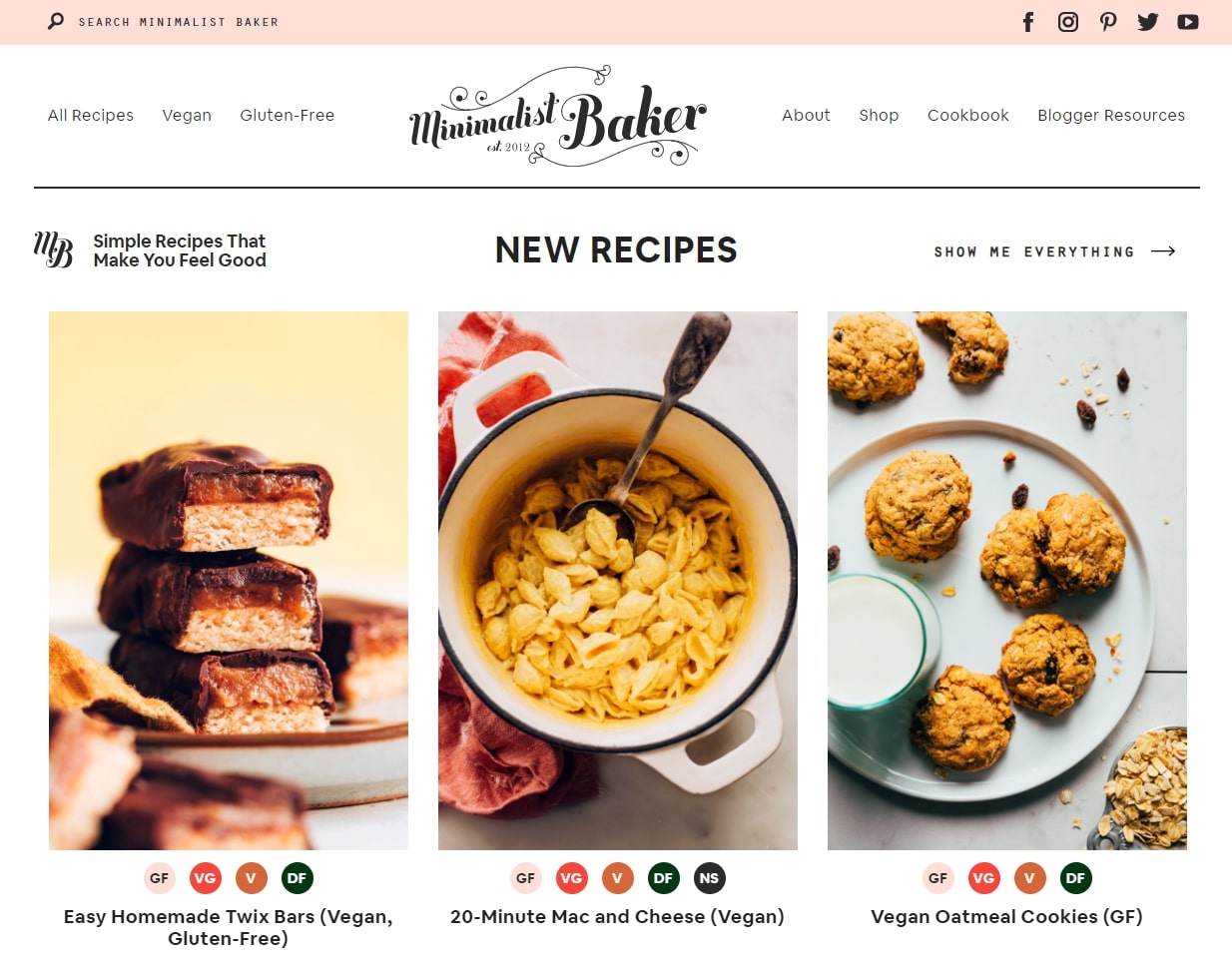
For some inspiration, check out Minimalist Baker. The food blog focuses on recipes that require only one bowl, less than ten ingredients, and up to 30 minutes to make. Such scope makes their content appealing to people who are busy or new to cooking.
2. Choose a web hosting service
After picking a niche, the next step in order to start a blog is choosing a web hosting service, which is responsible for storing and publishing websites on the world wide web.
With so many hosting providers and plans to choose from, it can be challenging to figure out the most suitable one for your blog. Here are some questions to guide your search:
- How familiar are you with hosting management? For complete beginners, it’s best to pick a hosting provider with a user-friendly control panel and reputable customer support.
- How much website traffic do you anticipate? The number of monthly visitors the blog gains can determine how much bandwidth, disk space, memory, and CPU power it needs.
- How much are you willing to spend? Make sure the hosting plan suits your current budget and justifies the benefits and features offered.
- What content management system (CMS) do you want to create the blog with? The go-to choice is usually WordPress, which is known for its powerful blogging features. Most hosting providers include an automatic installer to use the software right away.
Generally, new bloggers start with a shared hosting plan, which is an ideal option for websites with low to medium-sized traffic. It’s also the most beginner-friendly option since it doesn’t require advanced technical skills to manage.
Once the blog’s size and traffic have outgrown the plan’s resources, the blogger will usually upgrade to a VPS or cloud hosting package.
Both come with more resources to support the website, though the first option requires some server management skills to ensure it can run properly.
Alternatively, consider purchasing a WordPress hosting plan. This type of service is readily optimized for the CMS and typically includes pre-installed plugins and themes to customize the blog with.
3. Register the blog’s domain name
Besides a hosting service, a domain name is also essential to create a blog. It’s the URL address people enter on their web browser to open a site.
Often, a domain also doubles as the blog name to boot, so consider picking one that sticks in people’s minds and sets the website apart from the rest.
Use these tips to come up with the perfect domain name:
- Make it concise - The name should describe what the blog is about in one to two words. A lengthy domain can make the website difficult to remember.
- Play around with a name generator - Such a tool can create blog name ideas based on keywords you enter. Use it to kickstart the brainstorming process, or in case someone else has taken the domain.
- Avoid commonly-used words - For instance, travel blogs often use terms like “nomadic” or “wandering.” Incorporating them can make it difficult for the blog to stand out.
- Use literary devices - Rhymes, alliterations, and wordplays are clever ways to make the blog name catchier.
- Use .com for the TLD - Most internet users are familiar with this domain extension and will automatically type them in when entering a site address.
- Check the name’s availability on social platforms - It’s best to use the same name on all of your social media profiles so that readers can easily find you. Namechk is an excellent tool for this.
- Pick a reliable domain registrar - Check the company’s pricing structure, extras, renewal costs, customer support, and terms of service. Compare it to other providers to see if it offers the best value.
4. Pick a theme and customize it
With the hosting and website set up, let’s pick a blog theme.
Often, a theme works as the foundation for web design, so it’s good to know what elements to look for during your search. We recommend going for a theme that:
- Offers ample options to customize the colors, fonts, and layouts to your liking.
- Looks good on the major browsers and desktop, mobile, and tablet devices.
- Loads fast.
- Is compatible with the plugins you will use.
- Has favorable ratings and reviews.
- Is regularly updated by the developer.
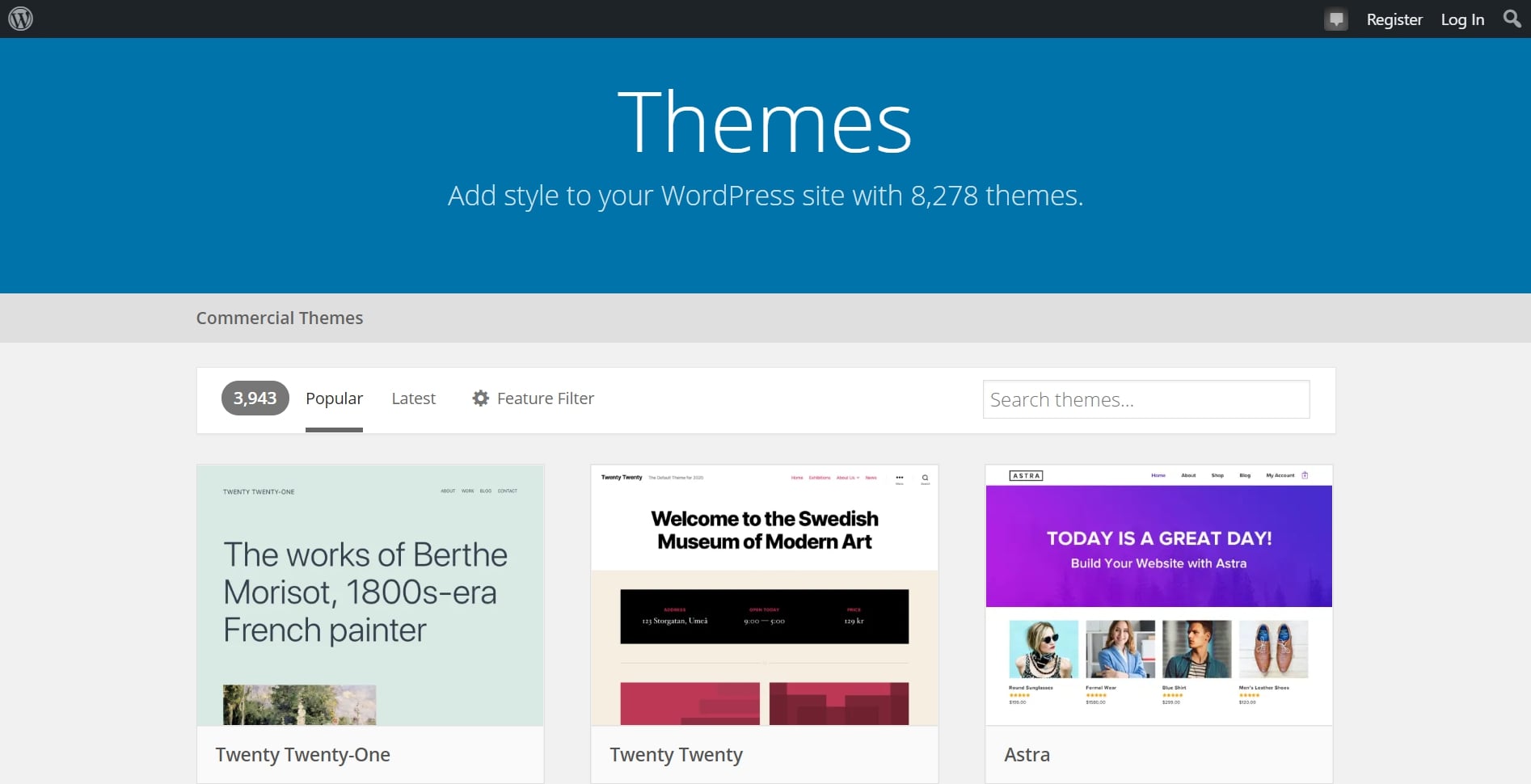
The CMS’s official website usually has a directory to look for free themes. WordPress alone has over 8 thousand themes to choose from, so there’s plenty to play around with.
If you want to find other options and don’t mind spending some money, check out our list of best premium WordPress themes.
After choosing a theme, start customizing the website. If you don’t know where to start, use this checklist:
- Set up the basic pages - Start with the homepage, contact page, and about page. Depending on your preference, the blog page can double as the home or be separate from it.
- Change the colors and fonts - Be strategic with what color or typeface to use as they can help make your brand and site more memorable.
- Create a menu bar - This is a place to include all the navigational links to the different pages and articles on the site. Blogs generally use a horizontal design for desktop and switch to a vertical hamburger menu for mobile.
- Customize the blog page layout - Consider sticking with the standard structure as most people are familiar with it. Here, the content area sits on the left, while a sidebar containing a short bio and some CTA buttons is on the right. See below for an example from Expert Vagabond:
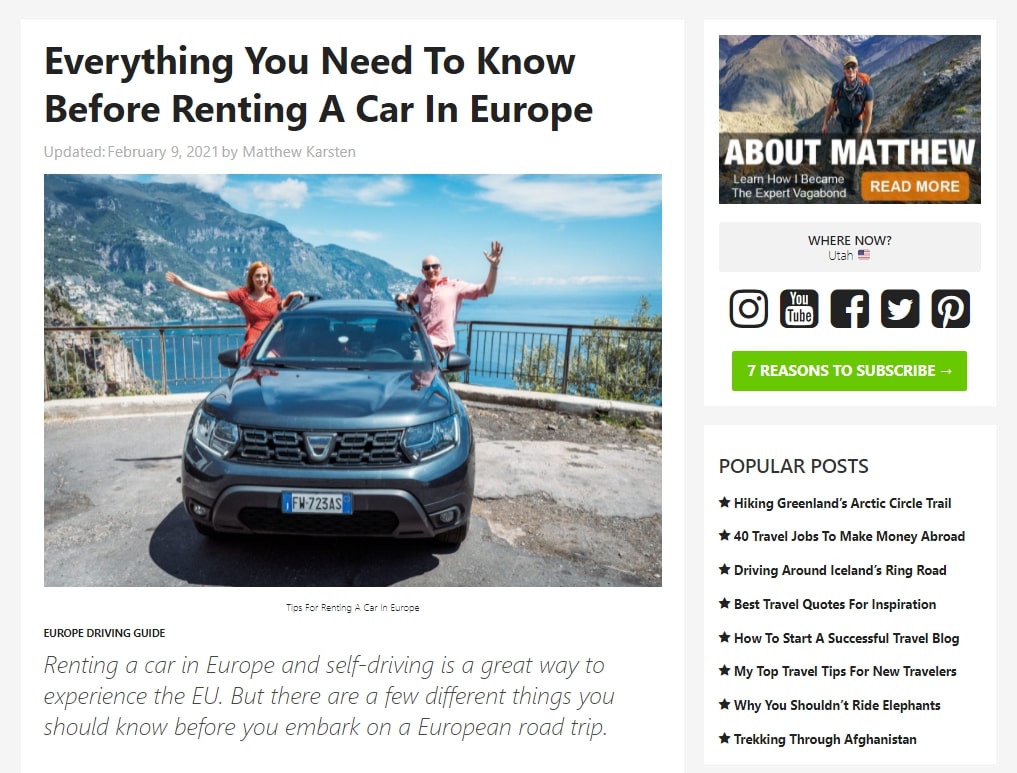
5. Create high-quality blog content
Before writing the blog posts, conduct some research. Doing this will help discover what topics to write about, what the target market looks for in the content, and how to provide better information than other blogs on the market.
Begin with researching keywords used by the target audience. Find out what search queries they may use that are relevant to your blog. Use tools like Ubersuggest and Answer the Public to help with this.
After selecting some keywords, check out the existing content for those terms. They can reveal insights into what information to include in the article. Evaluate the strengths of each blog post and combine them to provide more comprehensive content.
Now that you have some ideas, it’s time to create the article. Refer to these best practices to write a blog post:
- Stick to evergreen topics - These are subjects in your niche that people always look for answers to. If you run a healthy lifestyle blog, an evergreen topic example is “how to exercise regularly” or “what is keto diet.”
- Answer the most frequently asked questions - Look to the People also ask section on Google for references.
- Offer practical solutions - They can add more value to the article and inspire readers to take action.
- Provide strong evidence - Mention some statistics or case studies to make the content more persuasive and relevant to the reader’s interests.
- Focus on organization - Incorporate headings and subheadings to organize the ideas and make navigation easier. Some bloggers also use a table of contents for their posts to help with this.
- Pay attention to readability - Short paragraphs with one to four sentences each make for a better viewing experience. Incorporate unordered or ordered lists when necessary to support readers’ scanning behavior.
- Make the language easy to understand - Avoid complicated sentences and words unfamiliar to the target audience. Use the Hemingway Editor to identify difficult sentences in the article.
- Create an enticing title and description - In a few words, explain what value the reader will gain from the article. Avoid making false promises to lure visitors into clicking.
- Use visuals - Include a video or some images to make the information delivery more engaging.
- Check for grammatical errors - Impeccable grammar, spelling, and punctuation can boost the blogger’s credibility.
6. Improve SEO
Short for search engine optimization, SEO aims to make your blog posts appear on the first pages of search engine results in hopes of earning more organic traffic.
Studies show that high-income bloggers mainly receive traffic from organic search. Thus, improving the site’s SEO is worth it when trying to grow the blog and turn it into a business.
One way to increase your web pages’ rankings is by focusing on user experience. Search engines, namely Google, prioritize search results that offer beneficial information and make it easy for visitors to obtain it.
Thus, besides keyword research and top-quality blog content, pay attention to the following aspects of the website:
- Speed - Generally, visitors prefer web pages that load in less than two seconds. The longer the duration, the more likely they are to leave the site without taking any action. Use speed test tools to measure the current website performance.
- SSL certificate - It’s an encryption technology that protects the connection between your site and the visitor’s browser. When a website isn’t SSL-enabled, the browser will warn that the user’s information may be vulnerable to hacking.
- Website navigation - A site is easy to navigate when all the pages are accessible within one or two clicks, enabling users to find their desired information quickly. This aspect can also help with search engines’ ability to crawl and index the content for ranking.
- Mobile-friendliness - Mobile users account for more than half of all internet traffic, so the blog should also look good on smartphones. Google also prioritizes the mobile version of a page for indexing and ranking.
- URL structure - Use words instead of ID numbers in the site’s URLs, like example.com/what-is-a-blog, so users can tell what the page is about from the get-go. Each one should have a unique slug to avoid confusion.
- Internal links - Linking to other blog posts in an article is a great way to encourage readers to explore your content and help search engines understand the relationship between all the web pages.
- Alt text - These are short descriptions added to an image to help search engines understand the picture’s content. Screen readers also use them to tell visually-impaired users what the image looks like.
- Meta title and description - These are the snippets that describe the page content on search results pages, as shown in the example below. WordPress users can edit them using an SEO plugin and make them more enticing for users to click.

These are some of the primary means to optimize a website for search engines. That said, you also have to consider off-page SEO factors – such as the number of inbound links that go to the blog and social media mentions.
For beginner-friendly SEO resources, check out this Beginner’s Guide by Ahrefs. Also, read our list of best SEO tools to ease the optimization process.
7. Publish and promote your blog
Now that the website and content are ready, let’s publish your written blog posts and promote them.
Besides SEO, there are many ways to make the blog known to the target audience, such as social media. Ideally, you want to be present in platforms suitable to the type of content you create.
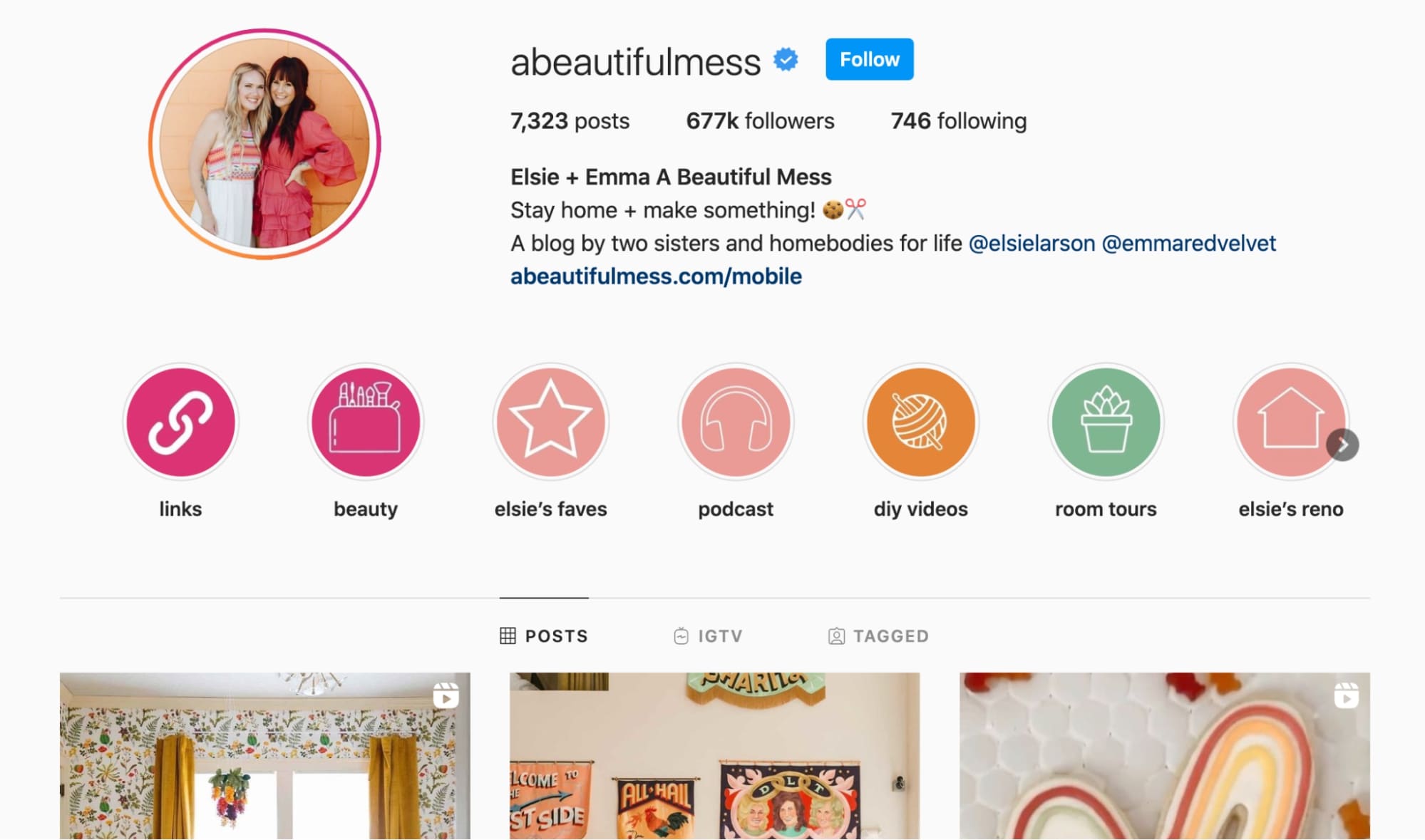
For example, Instagram is excellent for such lifestyle blog owners as A Beautiful Mess. These bloggers are known for sharing beautiful photos from their personal lives. This platform is also popular among women, which is the blog’s target market.
In addition to updating readers about the latest blog post, create bite-sized content from an existing article and interact with readers through comments. Consider using social media management tools to schedule upcoming posts and track their performance.
Another method to promote the site is by guest blogging, or writing articles for other blogs.
Doing this can not only gain more exposure to the blog but also build backlinks from trustworthy websites in the niche. Inbound links are crucial for SEO, as they can tell search engines that the site is a trusted resource among its industry.
Start by looking for popular blogs among your circles that accept guest submissions. Or, find a reverse blog, a platform where most blog posts come from freelance writers instead of the blog owner themselves.
Research their content thoroughly to get an idea of what they’re looking for. Pay attention to their submission guidelines. Then, create an email pitch explaining the type of article you intend to write and mention a blog post you like to demonstrate your knowledge of their website.
Finally, consider email marketing. More than half of users check their email first thing in the morning, so this tactic is a surefire way to reach your audience. For businesses, email marketing has an average return on investment of $42 for every dollar spent.
In addition to promoting blog posts, bloggers typically use emails to send exclusive content to their subscribers. Offering bonuses can make signing up for the mailing list much more attractive.
8. Track and tweak the blog as you go
With the blog up and running, you can measure its performance and make improvements in the process.
For this step, some analytics tools are necessary. Google Analytics is an excellent option for bloggers. It’s free and can display such key metrics for blogging success as:
- Demographics and interests - It can reveal the gender, age group, lifestyle, or customer segment that the blog visitors belong to.
- New vs. returning visitors - This report can determine if the content is engaging enough to make people come back.
- Top landing pages - This metric lists the web pages or blog posts that receive the highest number of unique visitors.
- Dwell time - This term refers to the amount of time a user spends on a website they clicked from a search result before they return to the same result. It can provide insights into how the content compares to that of competitors.
- Average time on page - It measures the total duration a person spends on a single page. It can show how the reader interacts with a blog post, whether it’s reading the entire article or simply skimming through it.
- Pages per session - It can display the average number of pages users open in a single visit. Use this to determine how well your internal linking strategy works.
- Bounce rate - This is the percentage of visitors who open the website and then leave without initiating any activity. A high bounce rate usually indicates slow website speed.
- Conversion rate - If you have an email opt-in form or sell products on the blog, Google Analytics can show the number of users that convert into subscribers or customers.
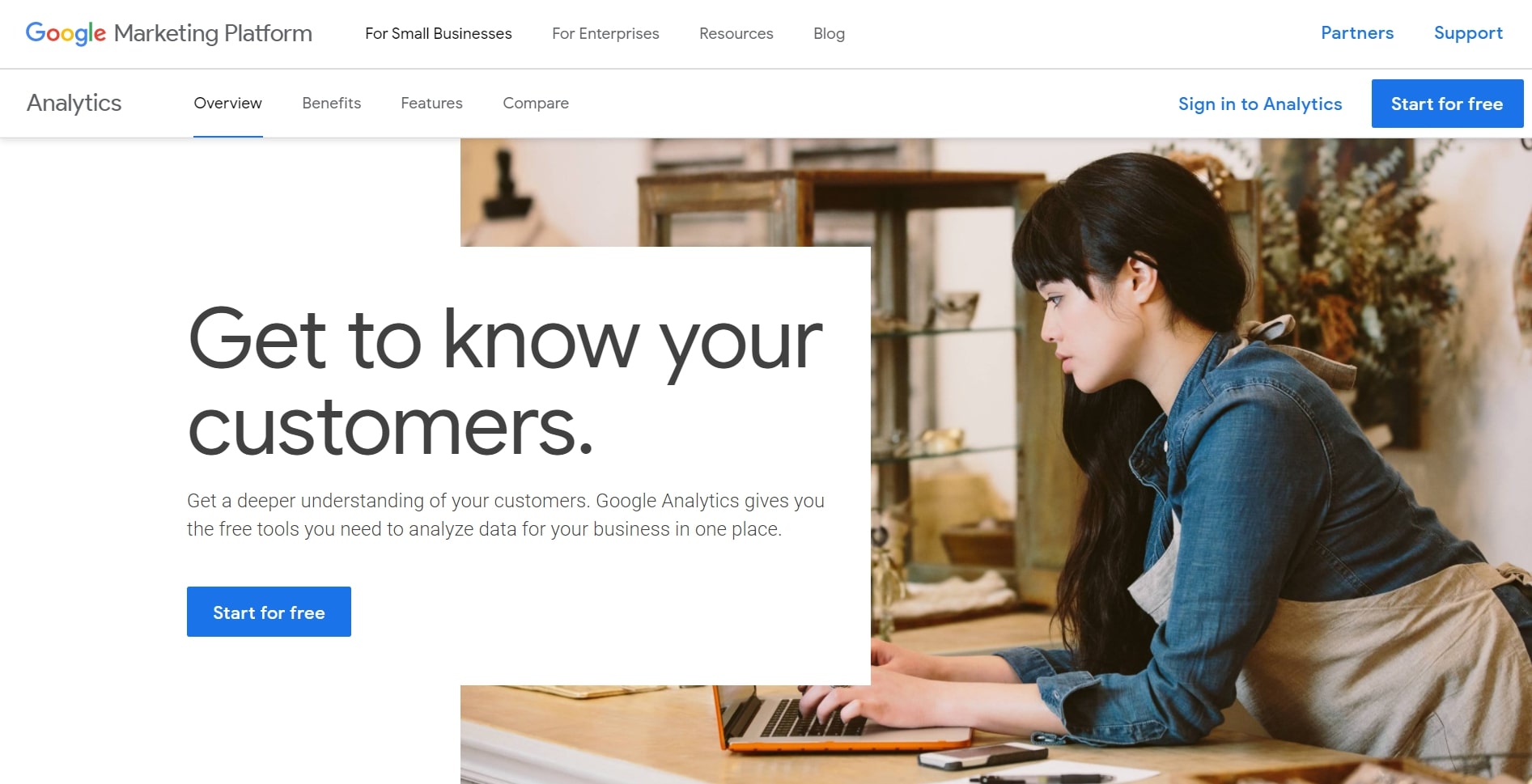
For measuring SEO efforts, check out Google Search Console. This platform can show the site’s performance on search results pages – from the average ranking position and the click-through rate to the number of times a user sees your page snippet on search results.
Tips and tricks to monetize your blog
Now that “What is a blog?” has been answered and a step-by-step guide on how to create one has been provided, it’s time to move on. What if you want to make money blogging?
There are many ways to monetize a blog – from display advertising and affiliate marketing to selling digital products. To maximize the blogging income, keep the following tips and tricks in mind:
- Focus on building your audience - Businesses prefer content creators with a solid and sizable following, as they’re more likely to trust the blogger’s recommendations and become customers.
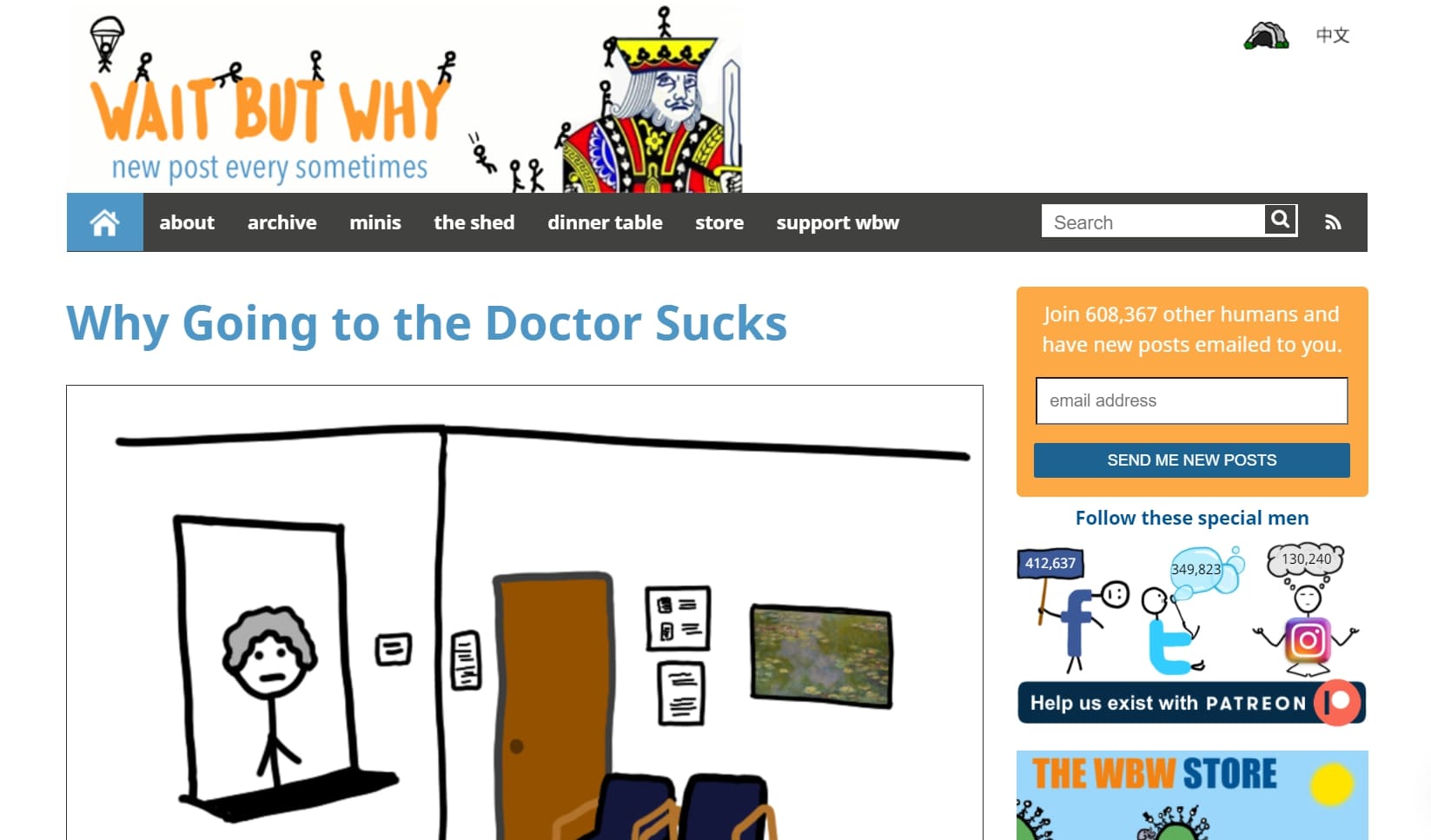
- Choose monetization methods that make sense for your blog - For example, many community-driven blogs like Wait But Why avoid display advertising because they ruin the user experience. Find a balance between monetization and readers’ satisfaction.
- Feature businesses that your followers will like - Partnering with a company that doesn't align with their preferences and values can risk losing their trust.
- Avoid intrusive ads - They can make for a poor viewing experience, causing visitors to leave instead of engaging with the website.
- If you want to create your own products, focus on the audience’s problems - They are more likely to make a purchase if the item can provide them with a solution.
- Disclose any business partnerships - The FTC guidelines state that bloggers should be transparent if they’re endorsing a company’s product or earning a commission from an affiliate program.
Characteristics of a successful blog
Knowing what a blog is and how to create one isn’t enough to become a top blogger. To set you up for success, it’s good to understand the general characteristics of an excellent blog, such as:
- Original - Each article takes a fresh approach to a commonly-discussed topic.
- Informative - The blog post covers the subject thoroughly, rather than only talking about basic information.
- Relevant - The information relates to the audience’s interests and aims to solve their pain points.
- Up-to-date - Good bloggers often revisit and revise their existing blog articles to make the information more current. Search engines also generally prioritize newer and updated content.
- Credible - For instance, the article uses trustworthy sources and data-driven evidence to demonstrate their expertise. There are also signals showing the blogger qualifies to discuss the subject.
- User-friendly - The website is fast, easy to navigate, and mobile-friendly. The blog post formatting makes the text more legible.
- Active comment section - An enthusiastic readership can signify that the blog content is engaging and enjoyable.
Putting it all together
To recap, the answer to “What is a blog?” is a website or type of site whose owner publishes or updates its content regularly. People use blogs for various purposes, from sharing personal information and building a community to marketing a business.
The difference between a blog and a website is that blogs mainly contain articles presented in reverse chronological order. It also allows visitors to interact with the blog owner or writer using the comment section.
If you want to start a blog, start with determining the blogging niche. It should suit your passions, have an existing audience, offer a fresh approach, and allow room for growth. Then, follow the steps to create a website and track the blog’s performance for the best results.
- We've also featured the best blogging sites
No comments:
Post a Comment